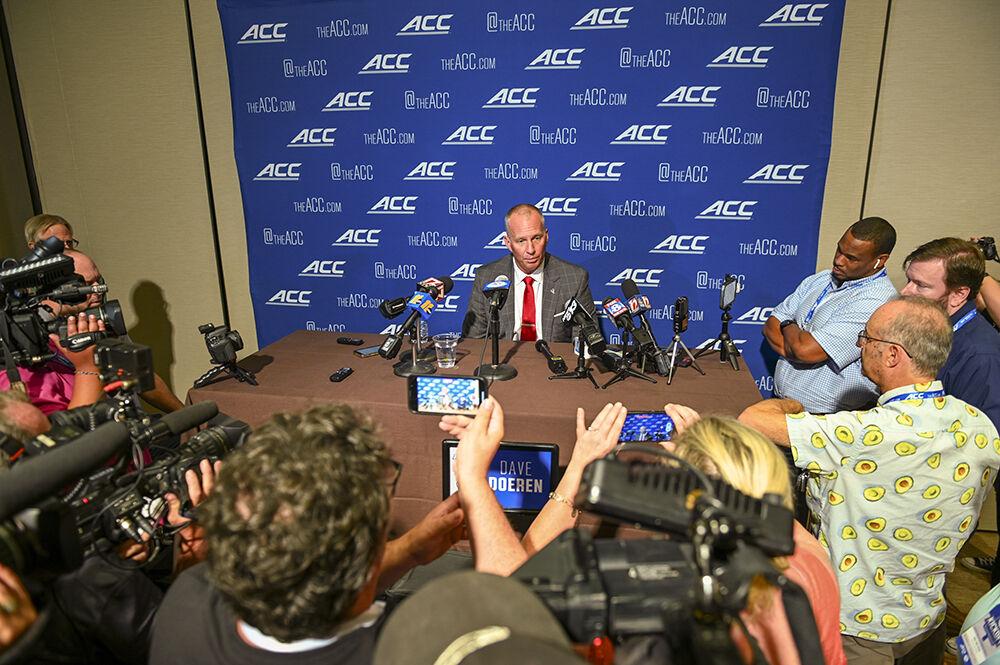Change is inevitable, and in the world of college football, conference expansion is already knocking on the door. The landscape of college athletics is evolving, and it’s time for fans and institutions alike to embrace this transformation.
While some may resist these changes, it’s important to recognize that expansion is not only a natural progression, but an essential step to ensure the continued growth and prosperity of college football.
Foremost among the arguments for expansion is the pressing need to remain competitive with other conferences. The ACC currently faces the peril of forfeiting the privileges associated with a position at the summit of collegiate sports, particularly with the SEC and Big Ten conferences surging ahead. In turn, expansion emerges as a pivotal strategy to bolster the ACC’s standing, ensuring that it remains a dominant force in the realm of college athletics.
The proposed addition of Cal and Stanford to the ACC is a strategic move for the conference to keep pace with the Big Ten and the SEC, and it indicates a desire to adapt and strengthen conference lineups. However, it’s not just about who’s in the conference — it’s also about how the conference is structured and how teams interact within it.
The proposed addition of two west coast teams to the ACC should raise concerns, particularly due to their geological distance. Teams like NC State, North Carolina, Clemson and Florida State have expressed reservations about the logistical challenges presented by such expansion. In this situation however, it’s essential to weigh these concerns against the potential benefits.
Beyond football, both Stanford and Cal boast highly accomplished women’s basketball, swimming and diving, soccer, tennis and volleyball teams. These additional sports not only generate interest but also bring in revenue for ACC schools, diversifying the athletic offerings, broadening the recruitment pool and bolstering the overall strength of the conference.
This expansion sets a precedent that may spark the interest of other teams looking for a new home. Ongoing discussions about bringing programs like Notre Dame, UConn and SMU into the ACC illustrate how the conference’s appeal is broadening. While addressing logistical hurdles remains critical, the allure of adding renowned football programs and expanding the ACC’s footprint across the nation suggests that the risk may be outweighed by the potential rewards.
Change is not just about expansion but also about reimagining the very structure of college football conferences. The recent exodus of major teams from the PAC-12 and the potential addition of Cal and Stanford to the ACC highlight the need for a comprehensive reevaluation of how college football conferences are organized and of how games are scheduled.
Drawing inspiration from the NFL, the ACC can delve into the possibilities of a revitalized divisional and scheduling system that not only optimizes competition but also mitigates travel fatigue. The NFL’s divisional setup is a prime example of how balanced competition can thrive within geographical proximity. While this may not currently be the NCAA’s top priority in 2023, especially as conferences scramble to scoop up schools across the country, it stands out as perhaps the most equitable and pragmatic approach to steer the course of college football into the future.
Expansion also provides the opportunity to address competitiveness within the respective conferences. Shifting towards a more meritocratic system ensures that the most accomplished and successful programs receive the recognition they rightfully deserve.
Competitive scheduling remains a persistent challenge within the ACC, where a select few programs can dilute the competition for powerhouse schools like Clemson and Florida State. Combined with the significant shifts in the SEC and Big Ten conference, this has led some teams to question their position within the ACC and the broader landscape of college football. The ACC must adapt to accommodate its top-performing teams to maintain its relevance in the sport.
While some argue that expansion could lead to increased travel and inconvenience for student-athletes, the financial backbone of many college programs, including non-football sports, is the TV money that comes from college football. The revenue generated from football programs supports other sports, scholarships and the overall well-being of the universities. Expansion can bring in more revenue, which can be invested back into the athletic departments and the universities themselves.
We must acknowledge that college football is, at its core, a business. The days of pure amateurism are long gone. Instead, they’ve been replaced by multibillion-dollar TV contracts, lavish facilities and high-stakes recruiting battles. In this context, expansion is a logical step. It opens the door for other schools to enter a more established division, providing opportunities for growth, recruitment and financial stability that may otherwise be unattainable.
Conference expansion isn’t limited to football but extends to the entirety of college sports, particularly in the Power Five conferences like the ACC, so t’s crucial to understand that these conferences represent a comprehensive package of athletic endeavors.
For instance, the ACC, which is renowned for its basketball tradition, has at times grappled with a sense of undervaluation. Some member teams feel overshadowed when compared to their peers in other conferences. To preserve its storied legacy, especially in ACC basketball, and address these concerns, conference expansion has the potential to enhance the visibility and competitiveness of various sports within the ACC, solidifying an esteemed place in the college sports pantheon.
College football conference expansion is not just a whim but a necessity for the continued growth and prosperity of the sport. As the landscape of college athletics evolves, it’s essential that we embrace these changes rather than resist them. Expansion ensures that the top conferences remain at the forefront of college sports, benefiting not only football programs but also the universities and the broader athletic community. It’s time to welcome the future of college football with open arms and the anticipation of exciting new possibilities.








